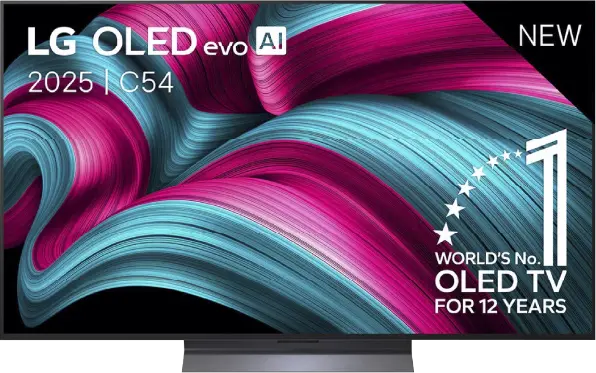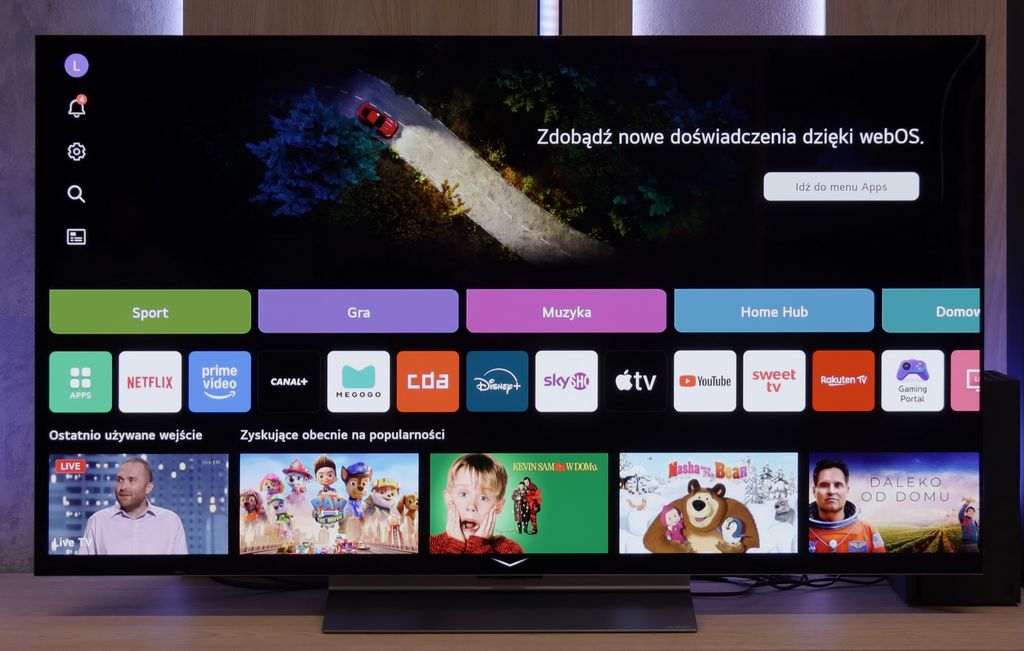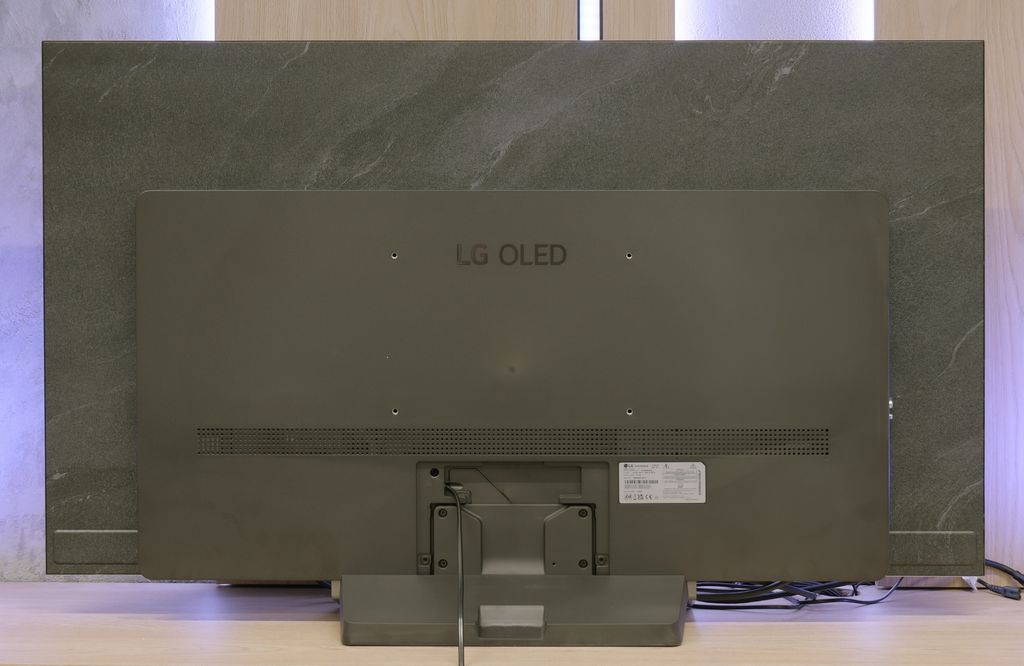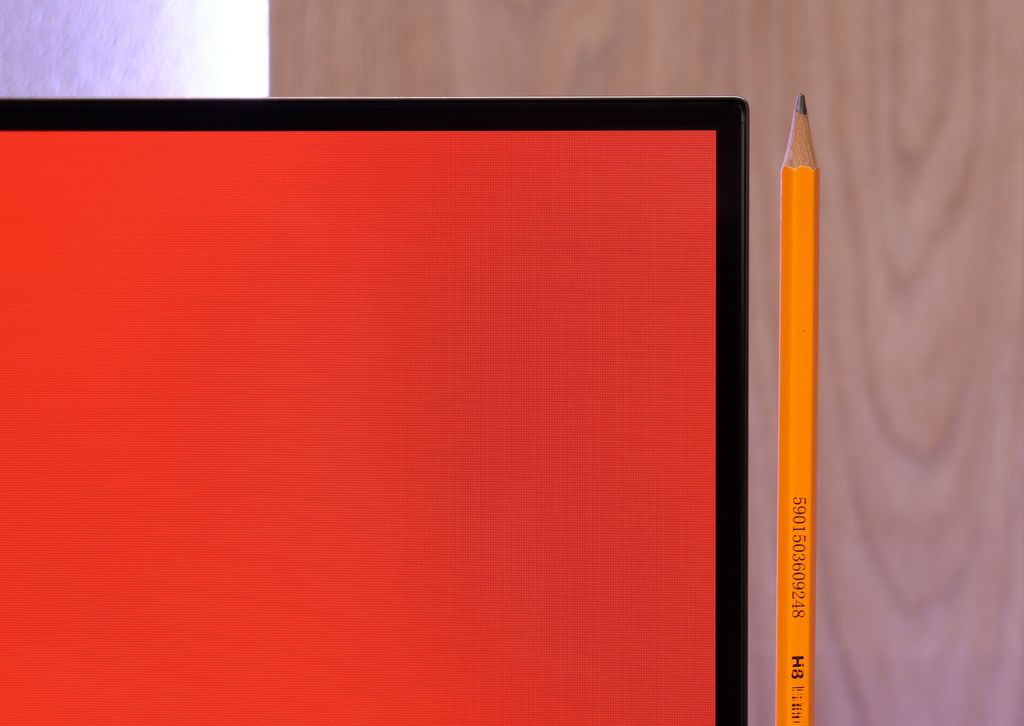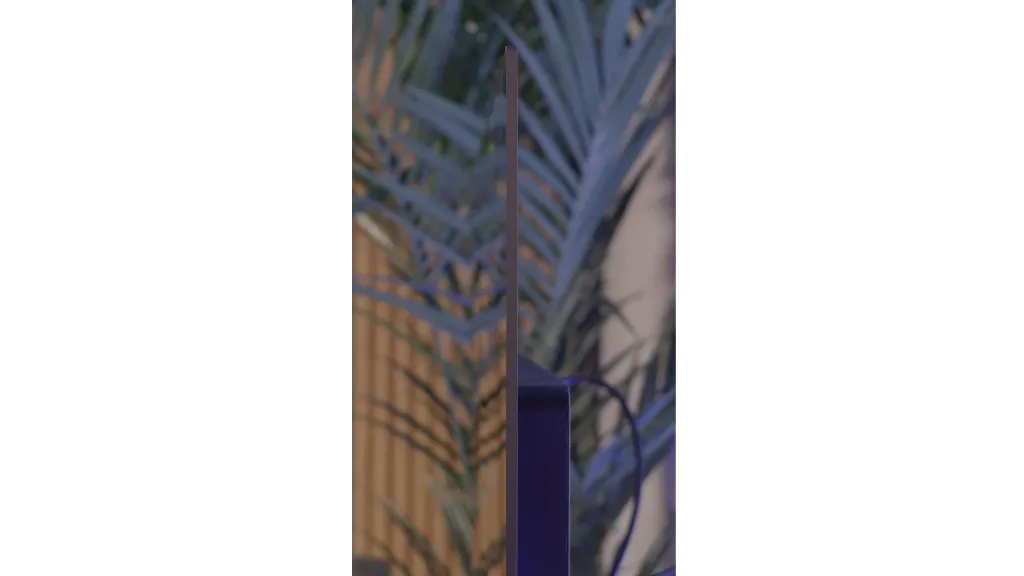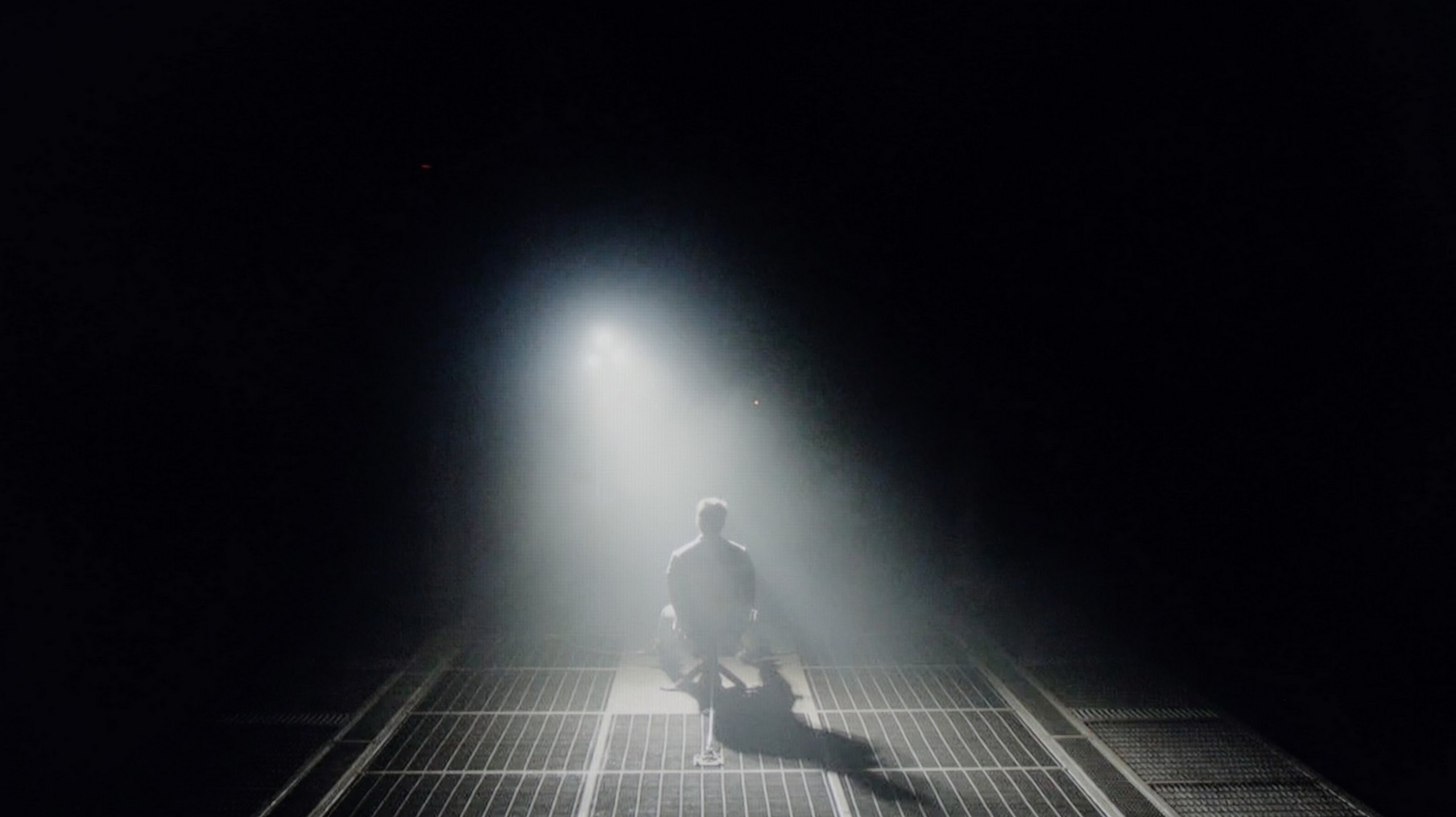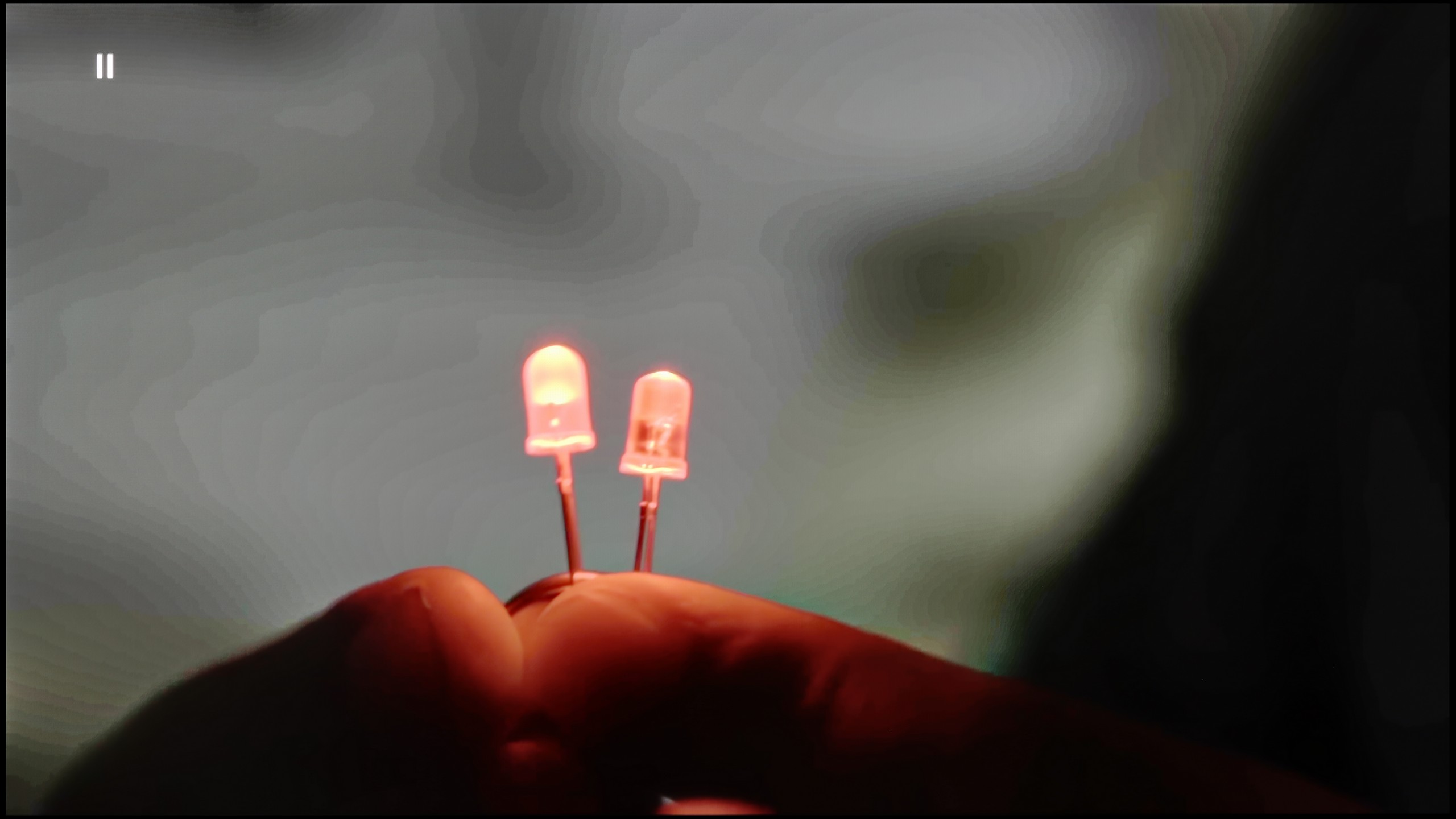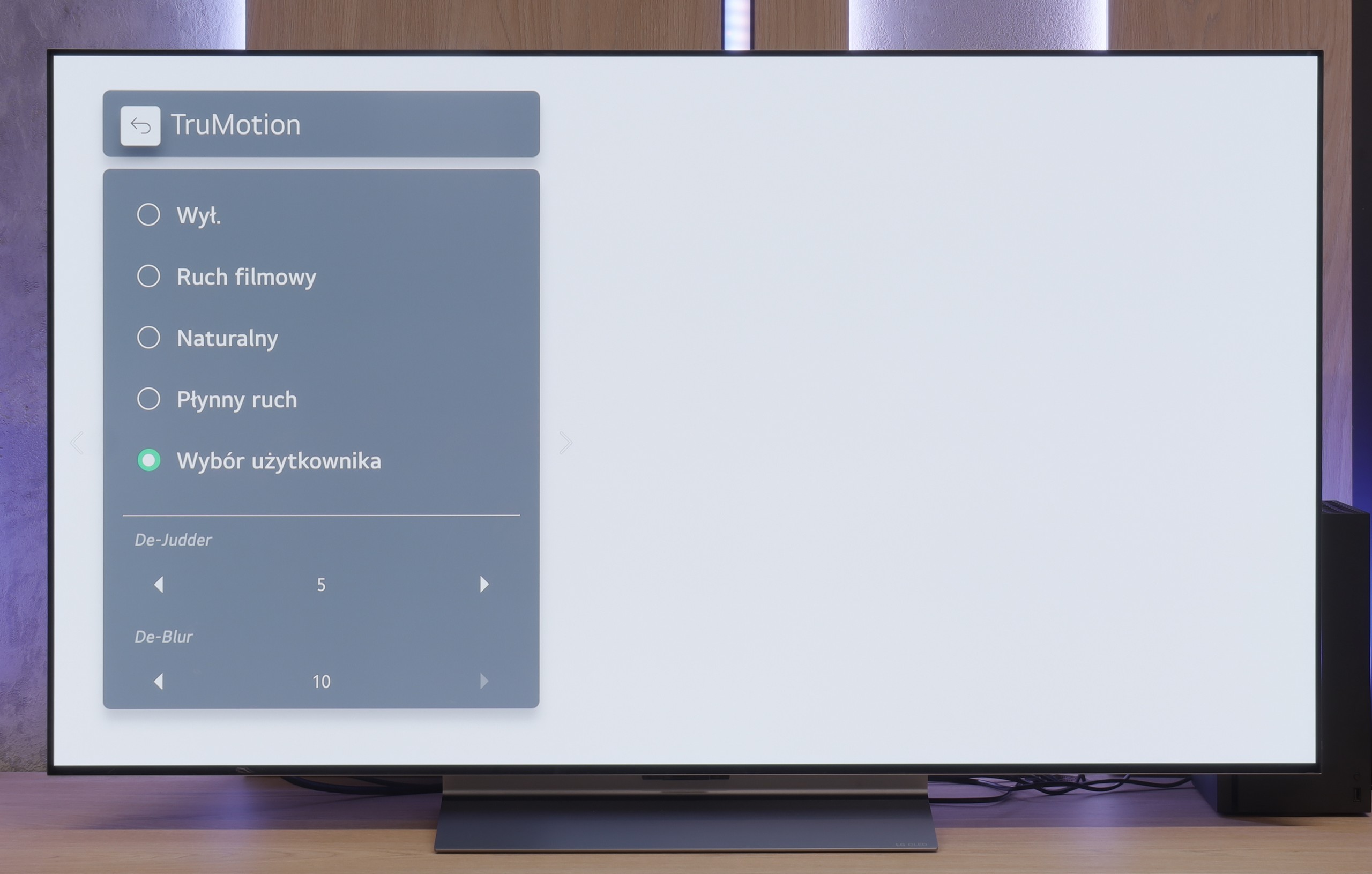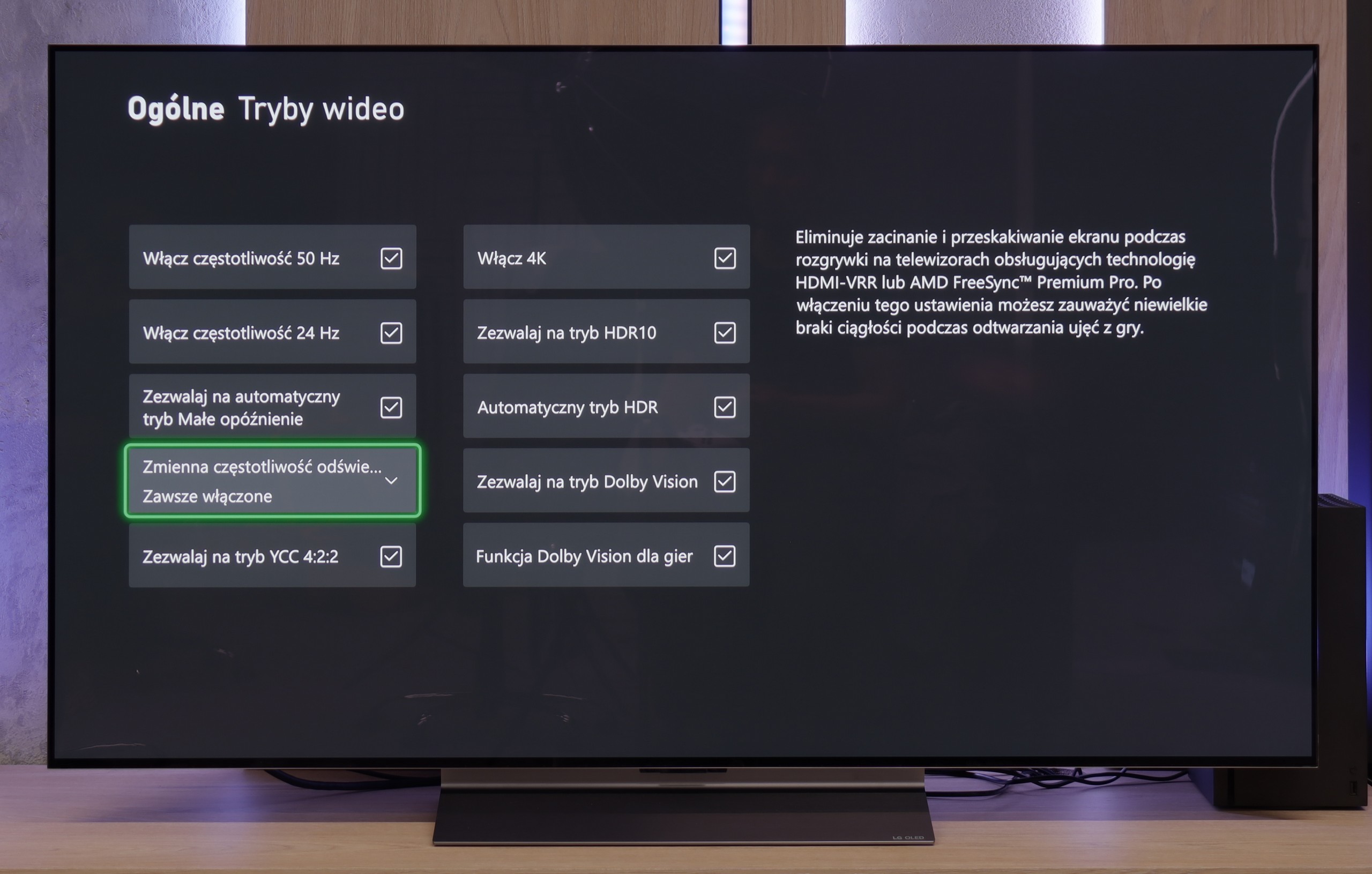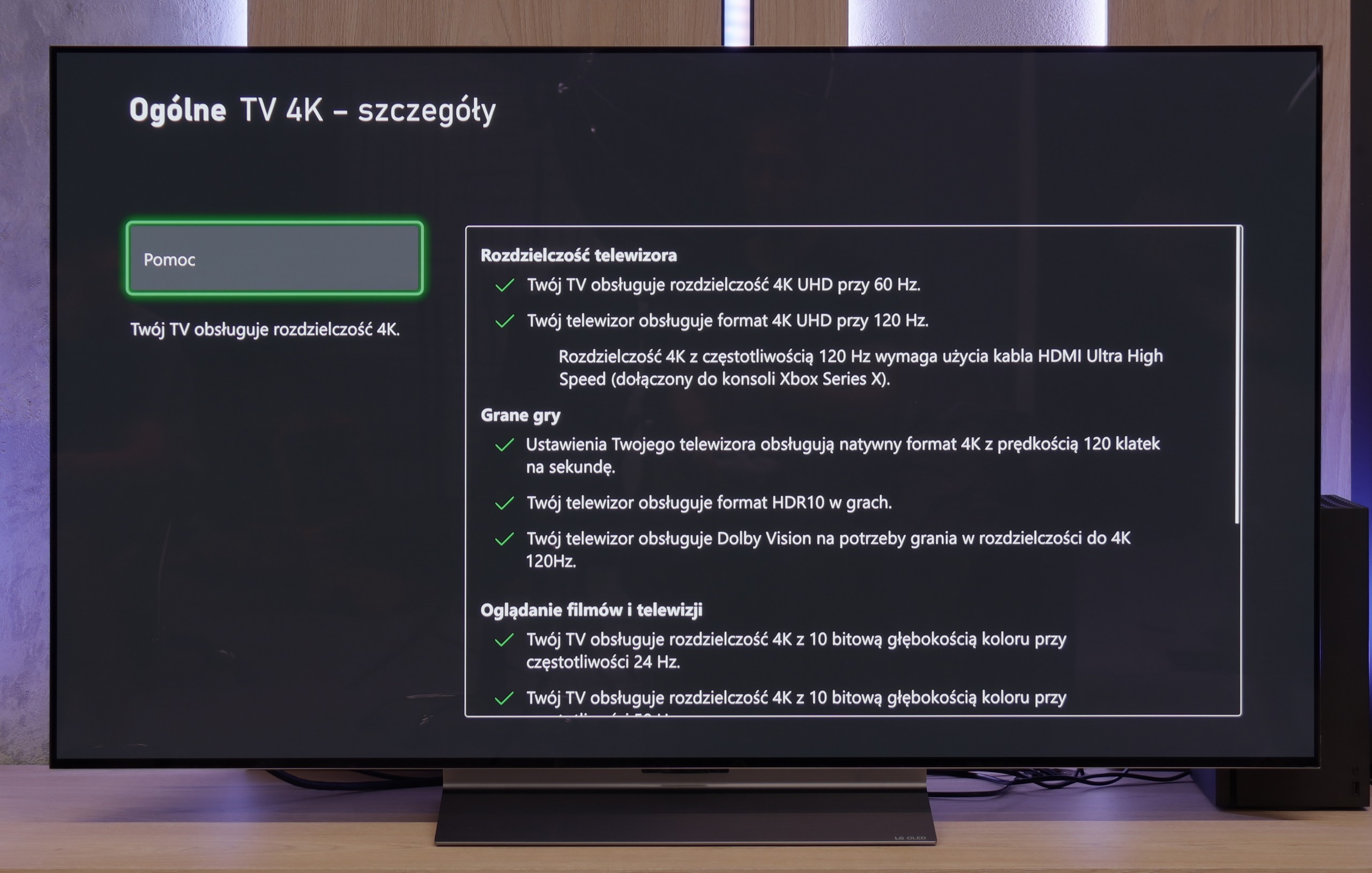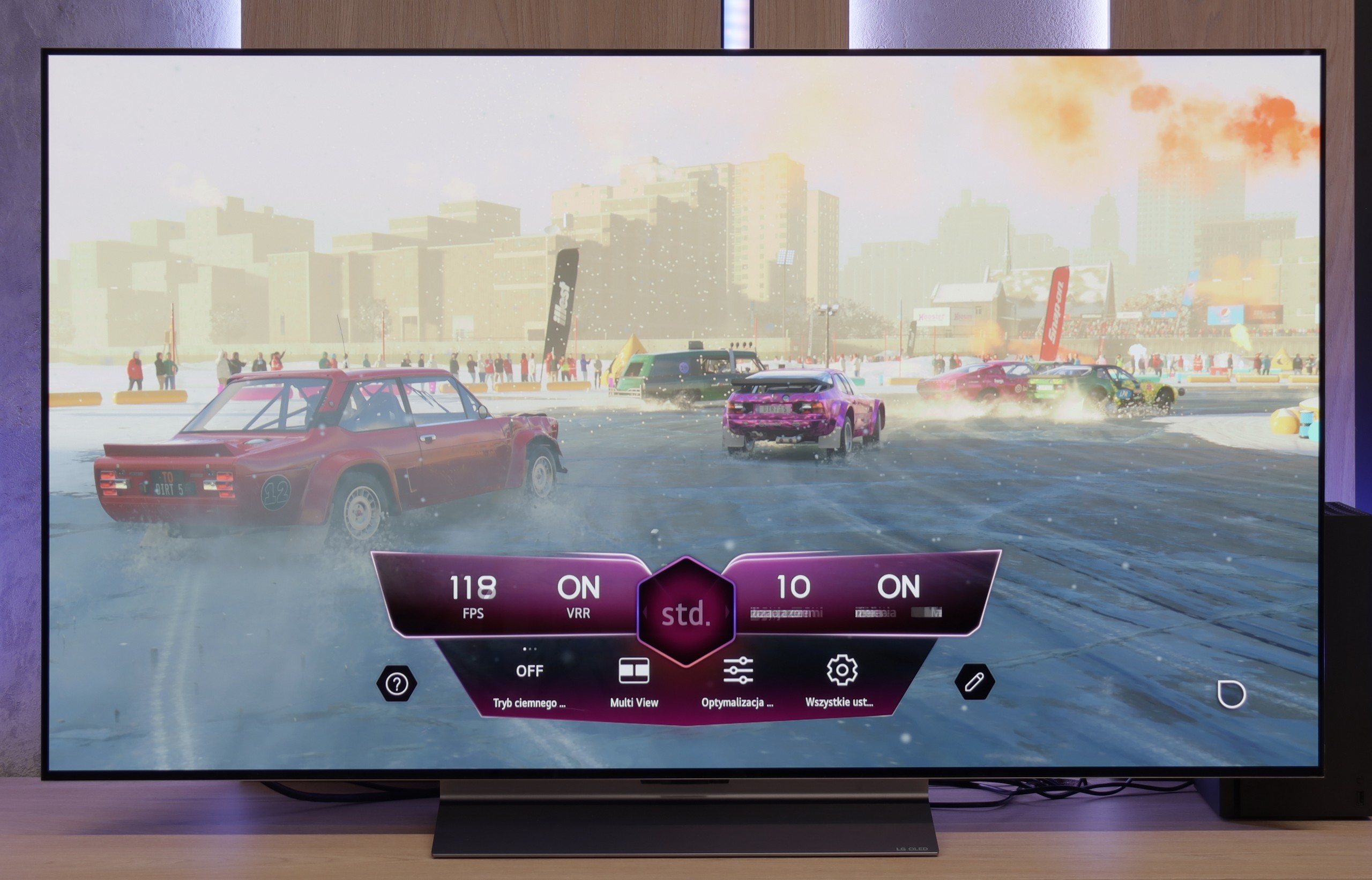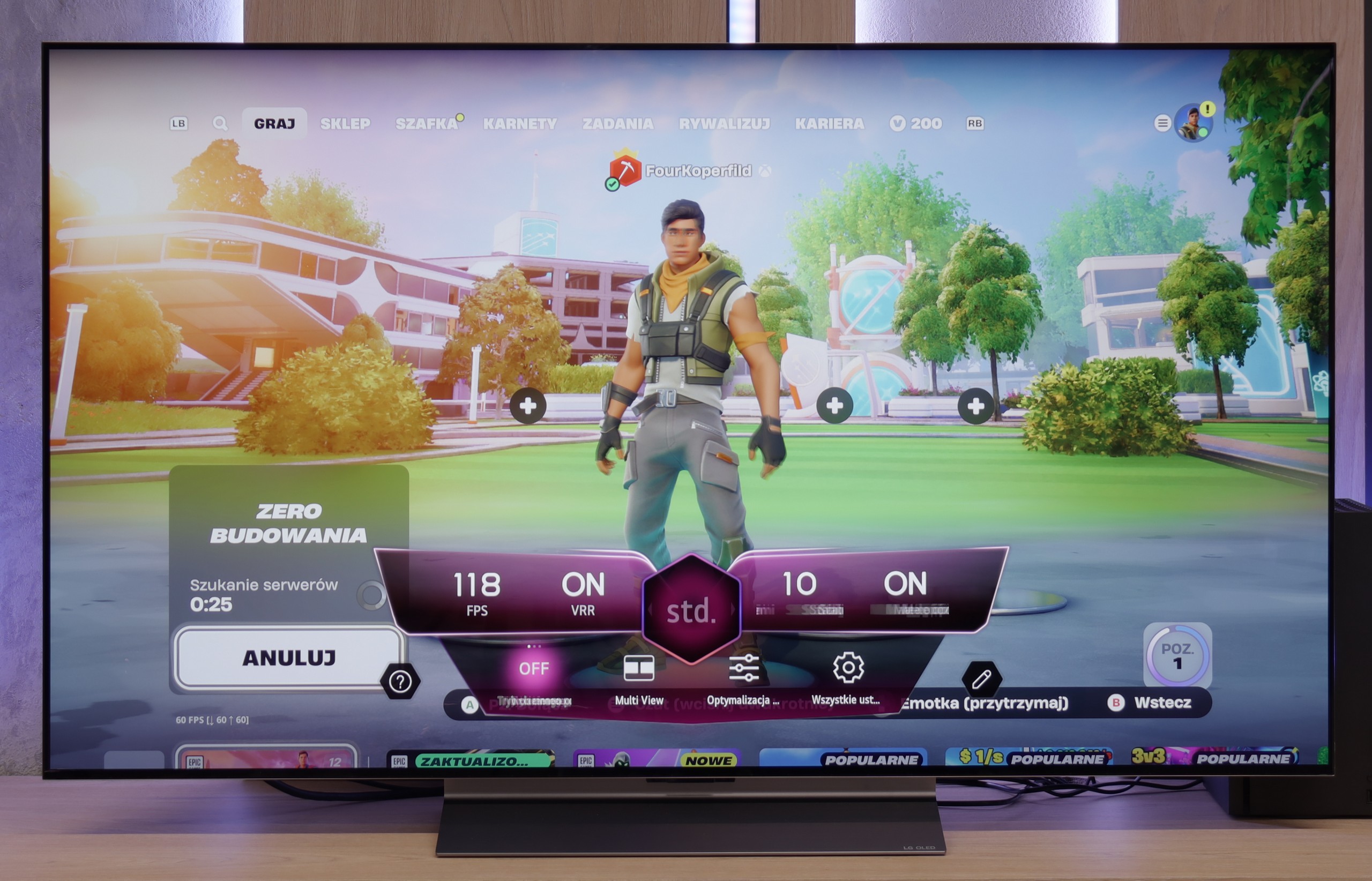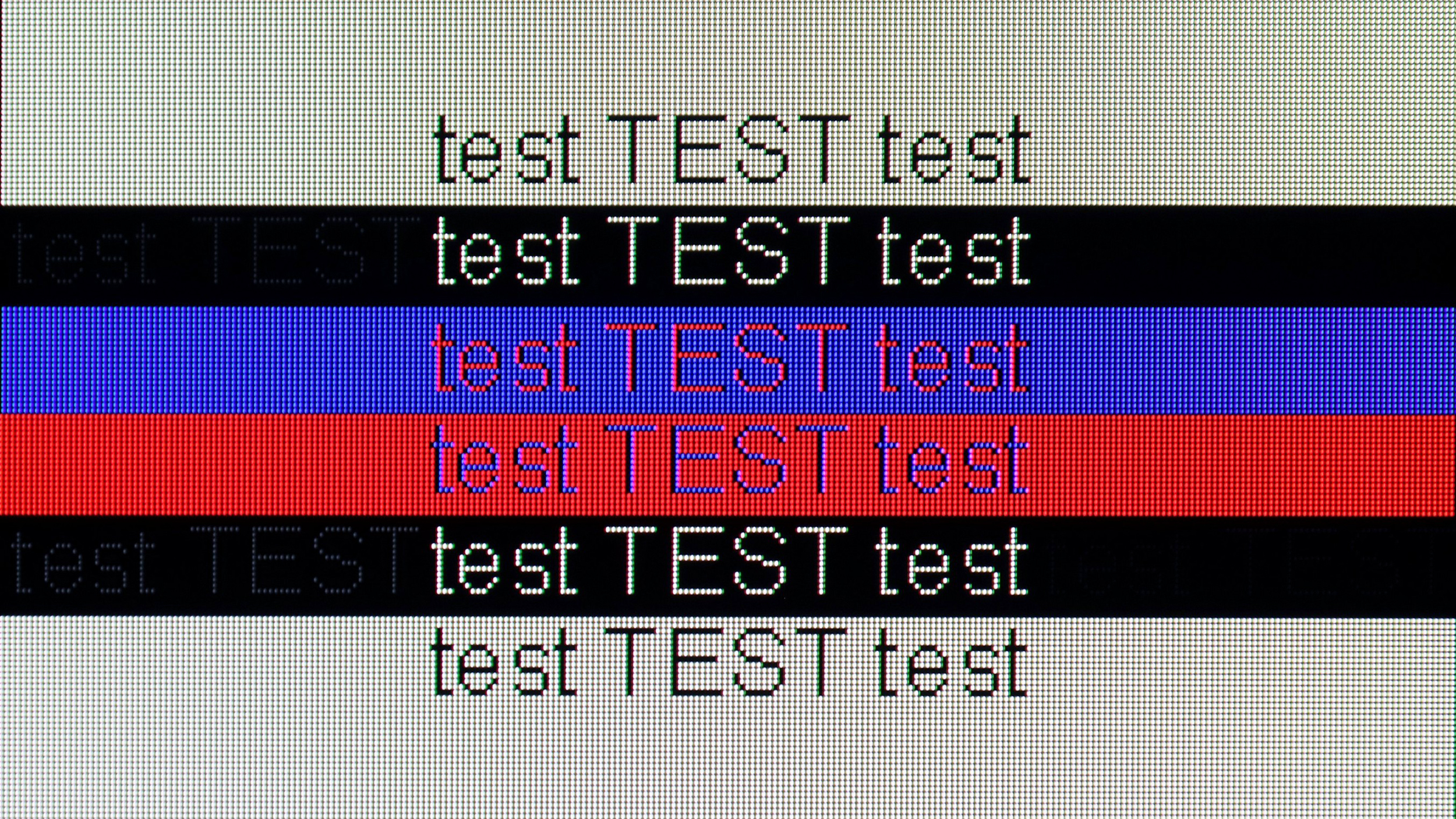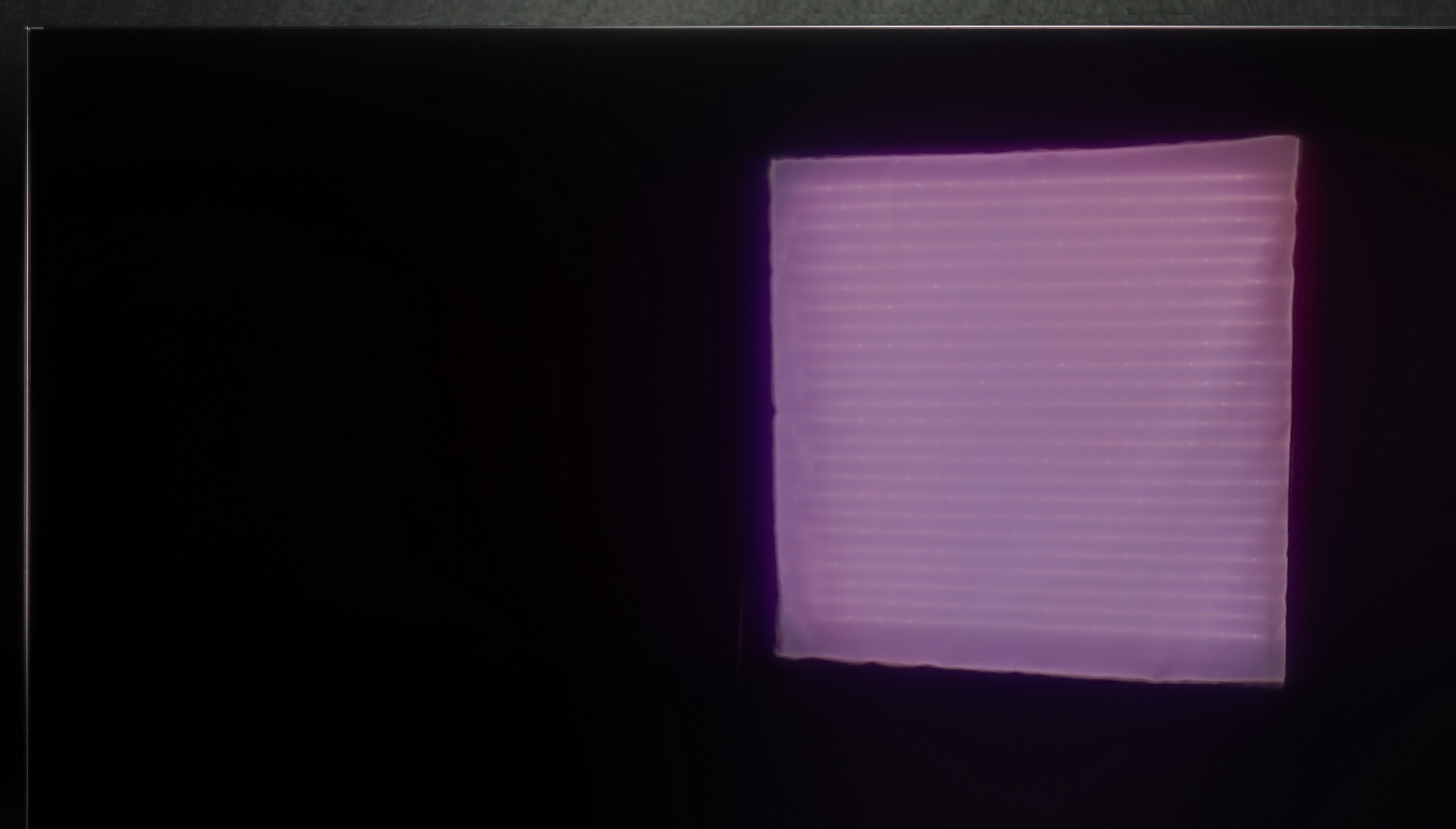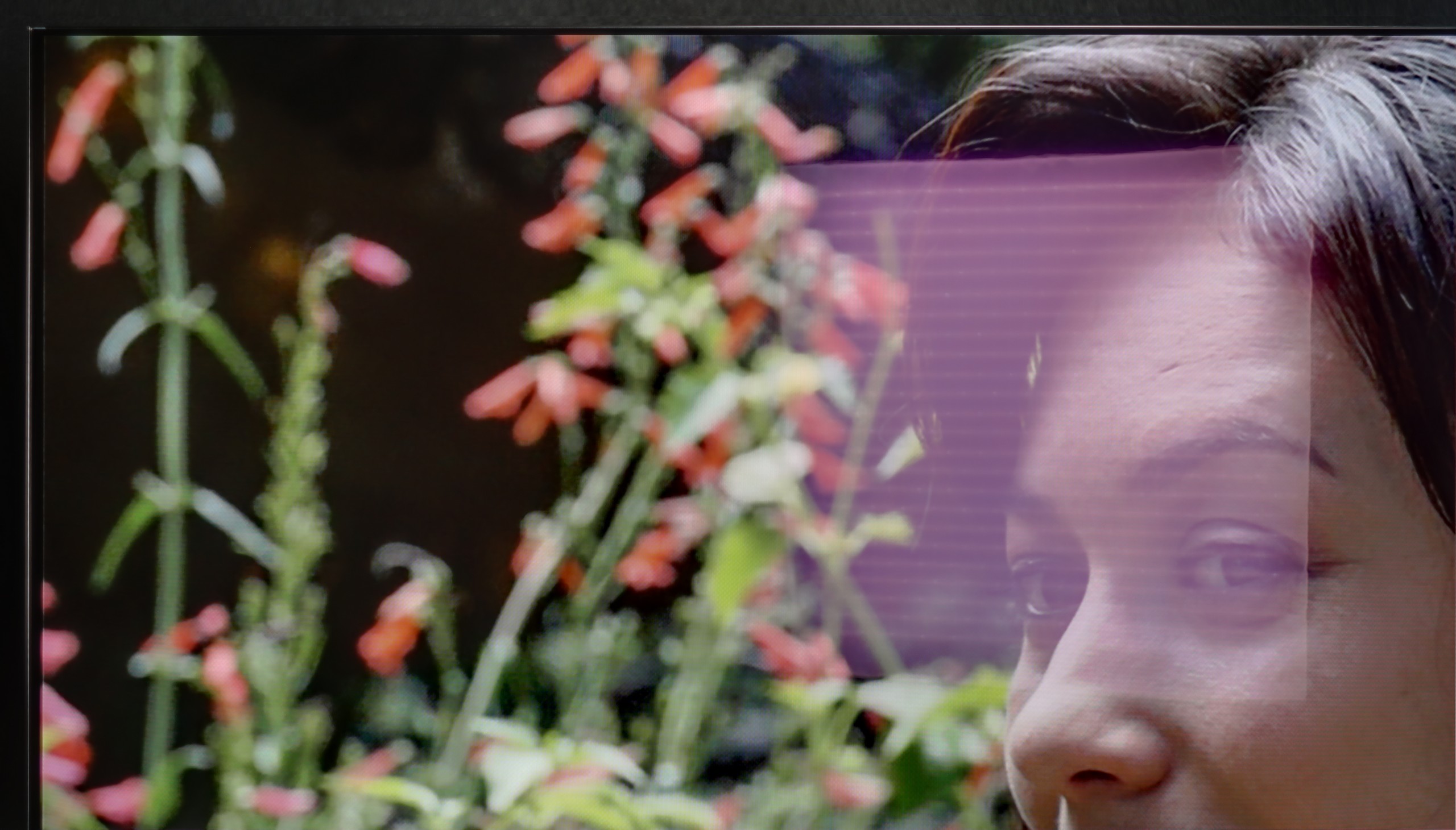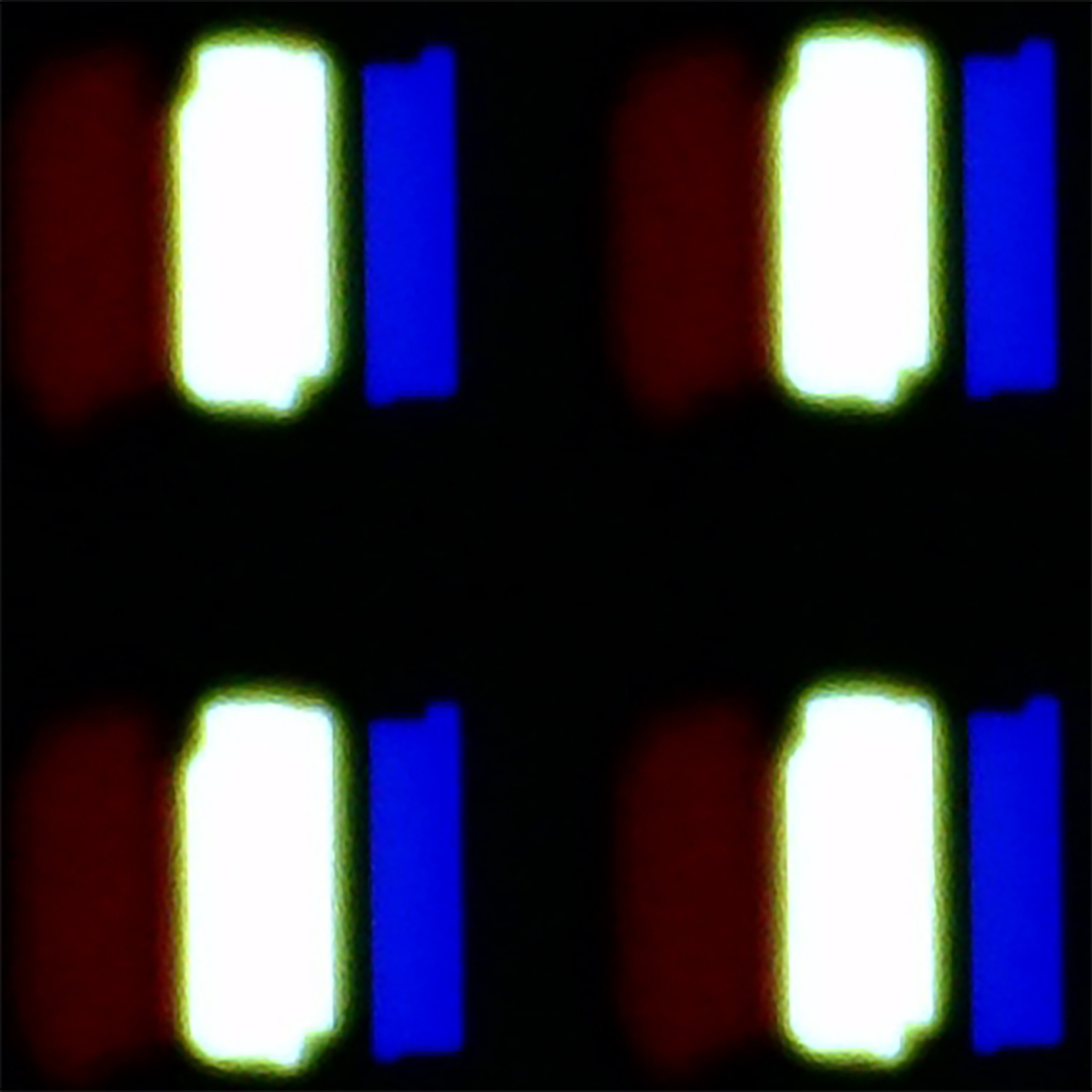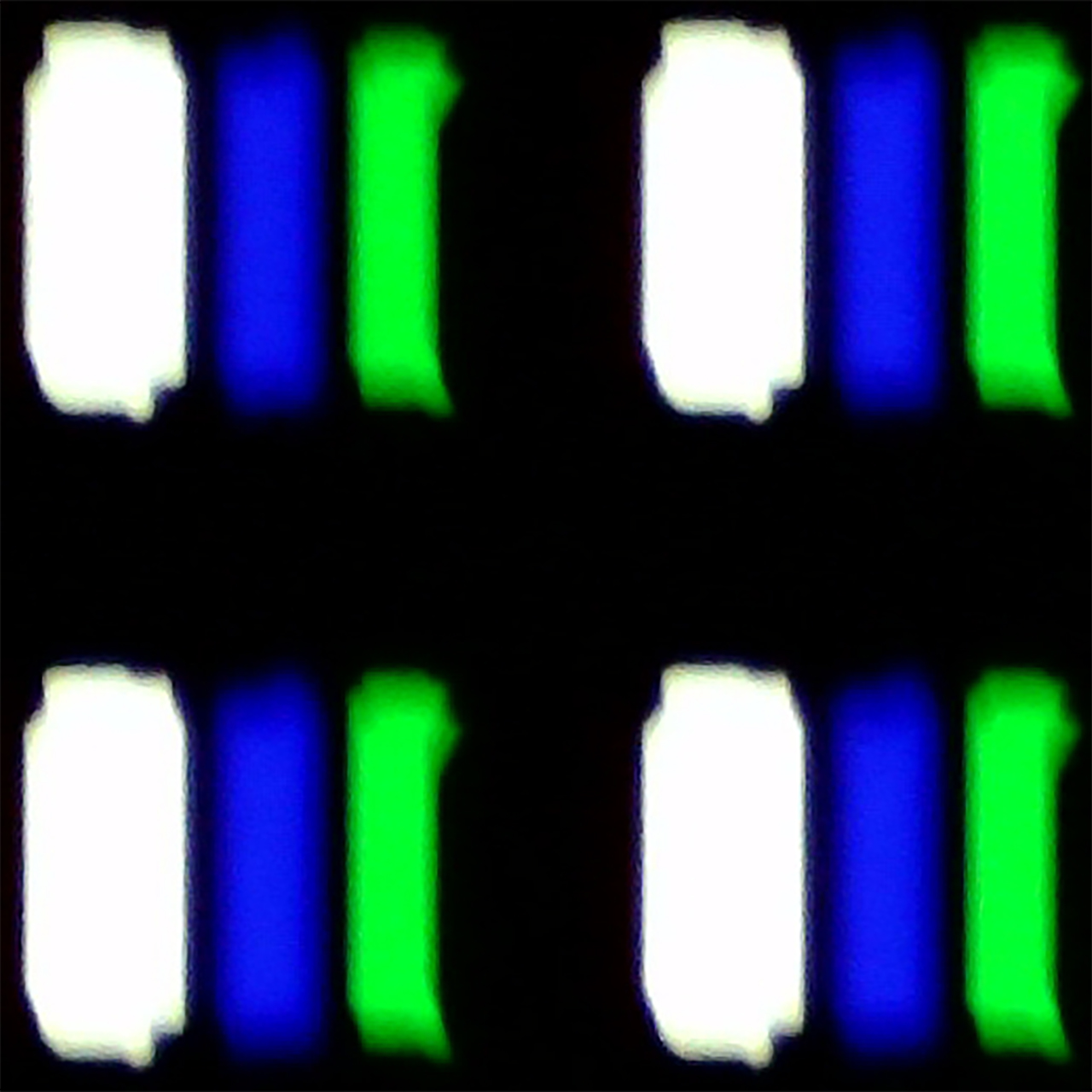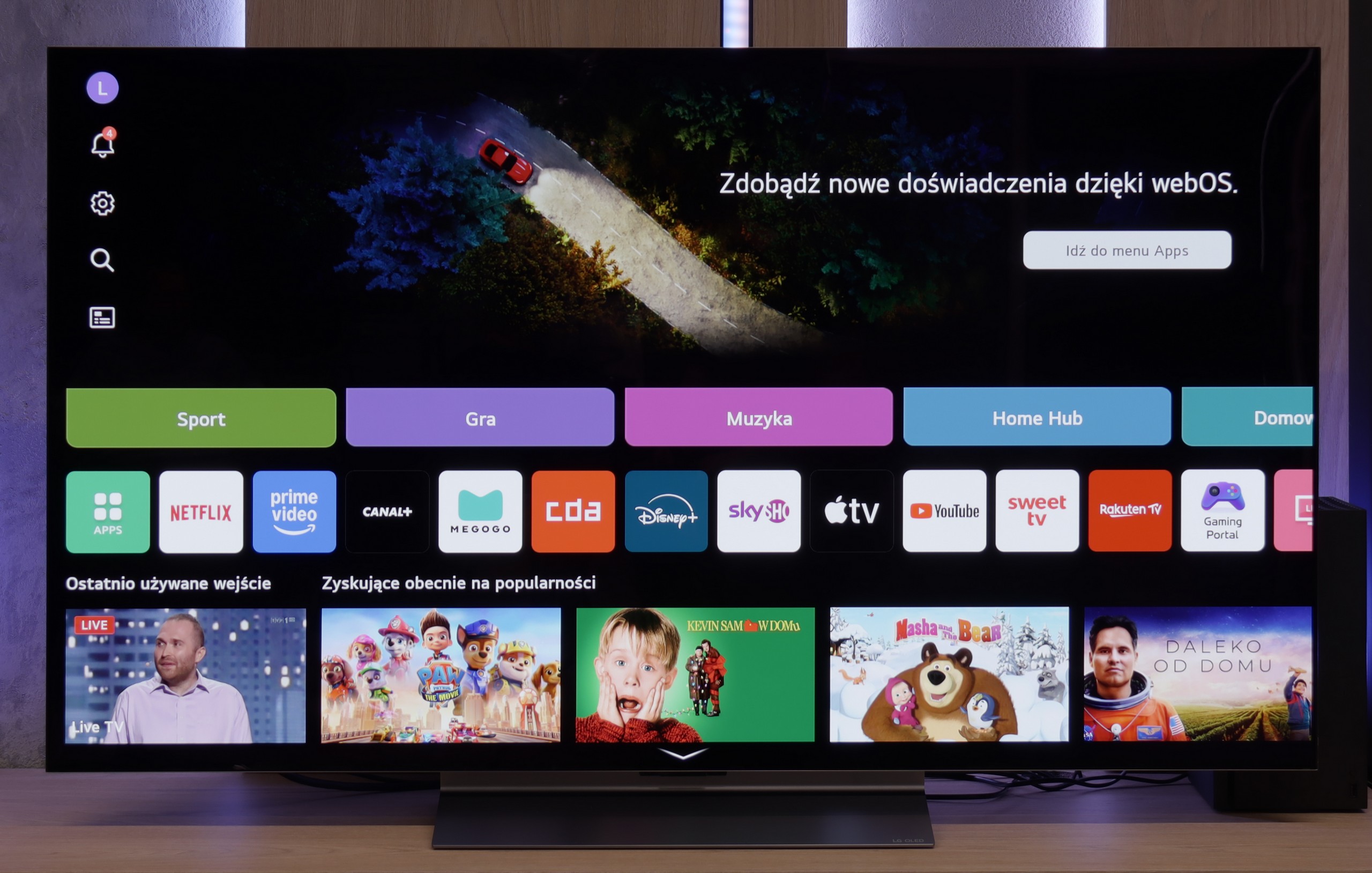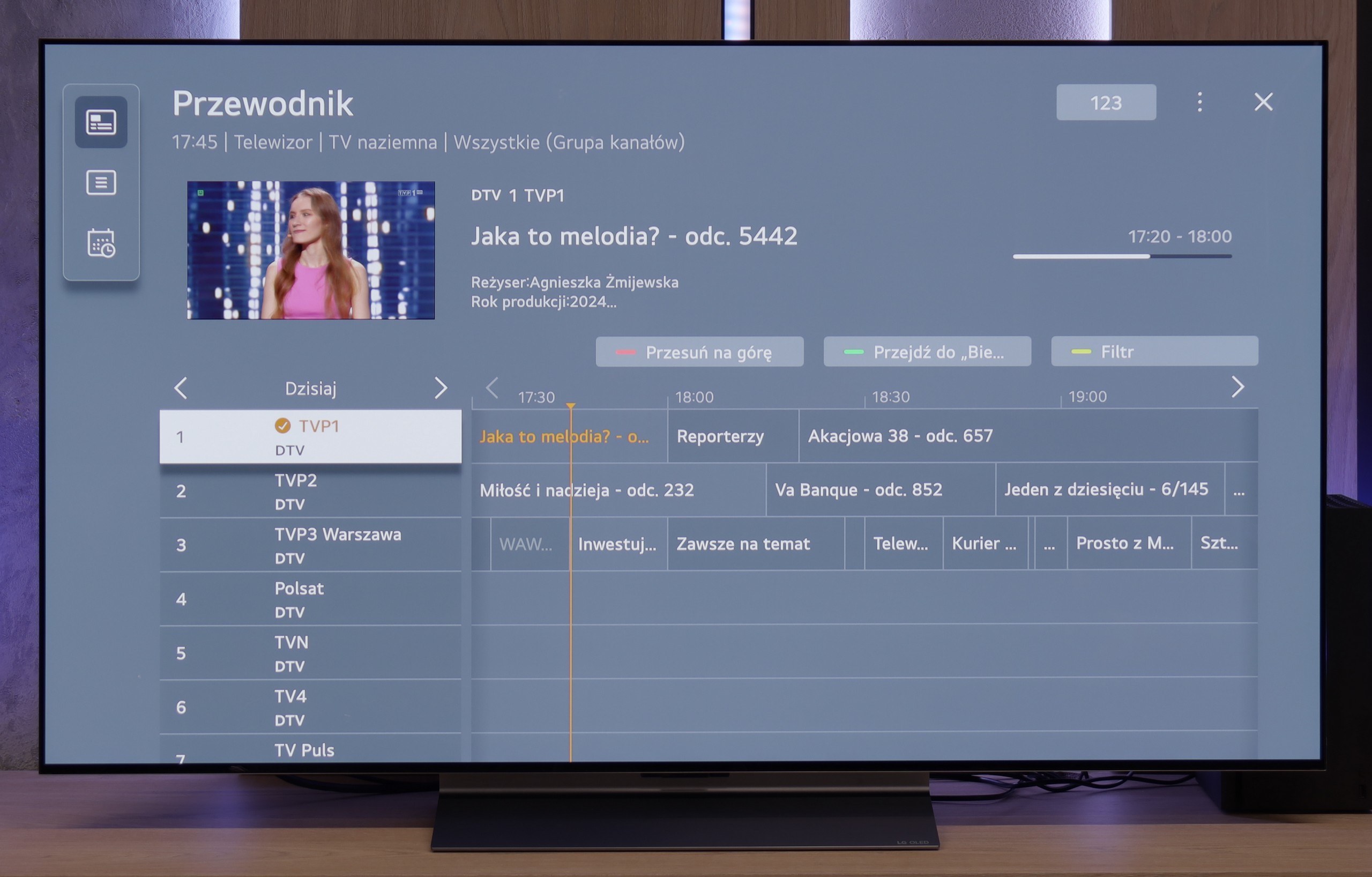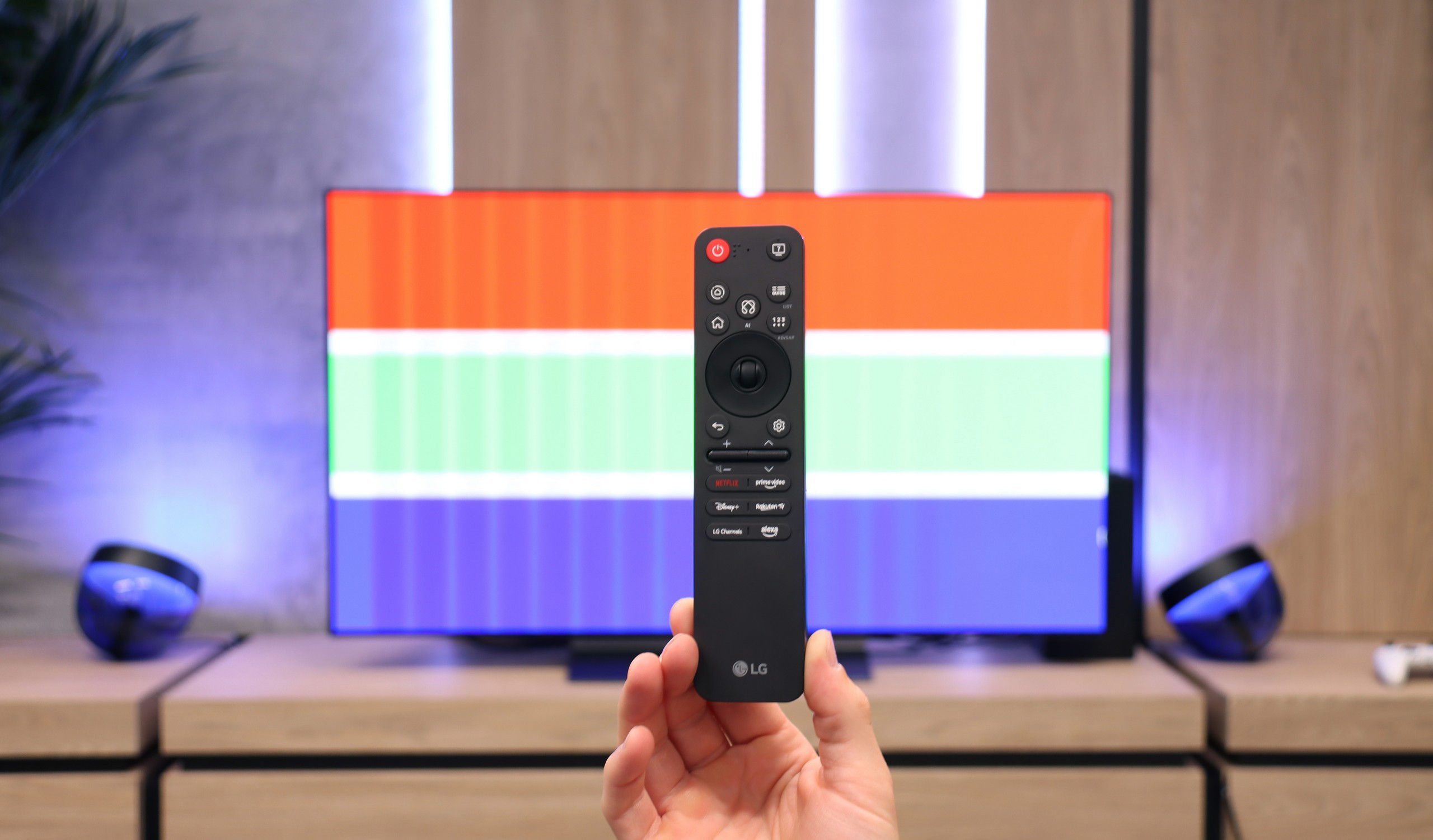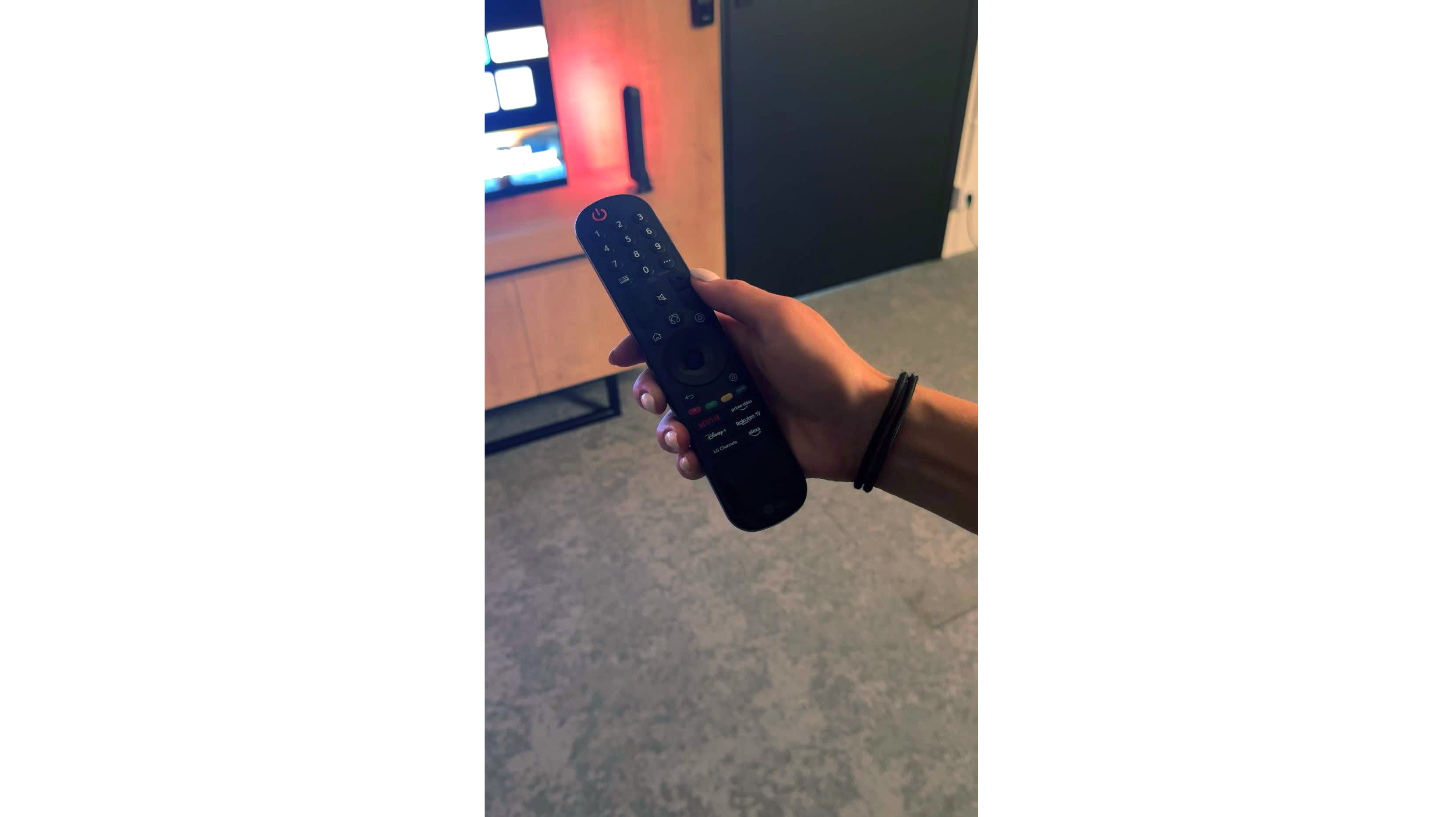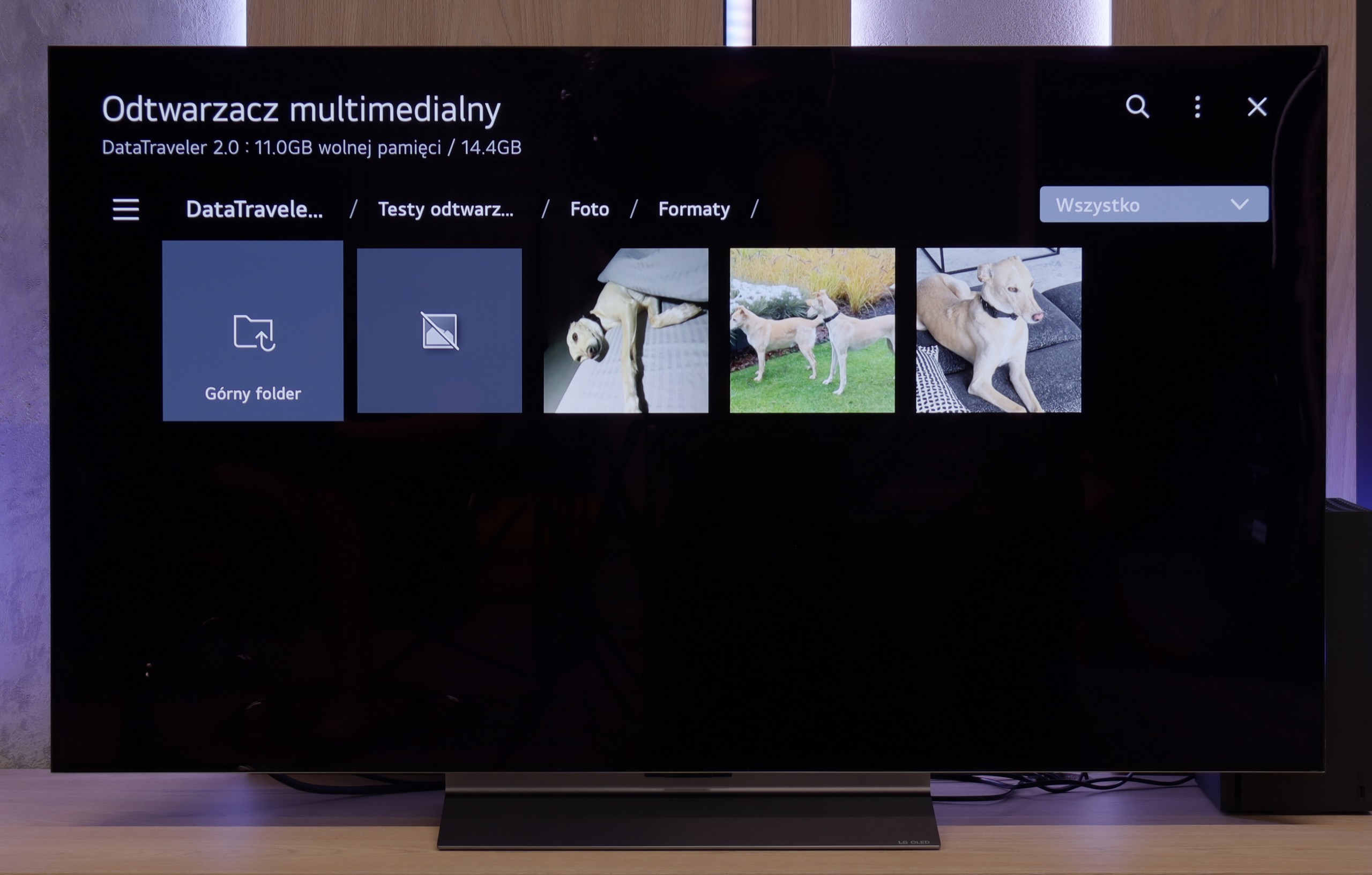Classic TV functions:
In terms of classic television functions, the LG C5 performs really well. Here we have the ability to record programmes to USB from built-in DVB-T(2) tuners, teletext support, an EPG programme list, as well as seamless pairing of headphones via Bluetooth. For many users, these are still very important elements of daily TV use – and here LG doesn’t lack anything except for the PIP function. It is also worth noting the remote control, or rather... the different versions of the remote. In our test, we used the C54 model, which is equipped with the new version of the Magic remote. It resembles Samsung's minimalist approach – there is no numeric keypad or "source" button, but it looks modern and is comfortable for daily use. On the other hand, other variants, such as C5ELB, may be sold with an older version of the remote – a more classic one, with more buttons and a numeric keypad. Some will find it more practical, while others will consider it outdated. In short: quite a bit of confusion, so it's worth checking the model suffix before making a purchase.
Smart TV:
Regardless of the remote's version, we operate the same system – WebOS. This is one of the most enjoyable solutions in the Smart TV world. An intuitive menu, quick operation, and support for popular features such as AirPlay, screen mirroring, and voice assistant make the system perform very well on a daily basis. Additionally, cursor control via the gyroscope in the Magic remote remains one of the most convenient forms of navigation in televisions. There are really many applications available – Netflix, Disney+, HBO Max, Apple TV, and many others. However, it should be noted that this is not a system based on Android/Google TV, so it might happen that we simply won’t find some less popular application in the LG store.
GoogleTV on OLED820
Philips OLED820 runs on the Google TV system, which immediately places it among televisions that truly offer user freedom. It’s a fantastic platform that needs no introduction – it boasts almost an endless number of applications, from popular VOD services to niche programmes or games. Google TV also allows you to personalise the home screen, tailoring content to our preferences, so the television actually “learns” our viewing style. A significant advantage is also the voice assistant from Google – fast, natural, and effective. It can understand even less obvious questions, and in practice, it works much better than many competitors. Unfortunately, there was a hiccup – the screen mirroring feature simply did not work during testing. This can be considered a minor issue, but in 2025, such things simply shouldn’t happen.
Classic Features of OLED820
When it comes to classic additions, the OLED820 does not try to play conservative notes. On one hand, we get a backlit remote control with a numerical keypad that is quite well organised and easy to use. On the other hand – you have to aim it at the screen, as it operates on infrared, which is more reminiscent of equipment from a decade ago than a modern television. It also lacks some features that are often found in competitors – there is no USB recording from tuners or a PIP mode. A nice touch among the classic solutions is the analogue mini-jack headphone input. This is rare today and could prove useful – whether for a senior with an additional headphone station or for someone who would like to connect older speakers.
AmbilightTV OLED820
One cannot overlook Ambilight, which is a hallmark of Philips. This solution impacts not only the appearance of the television but also the reception of content. The illumination system can be set up in various ways, from a multi-coloured mode that dynamically tracks the image to calmer, static backlighting. We definitely recommend the latter option, as the gentle light behind the screen makes the content being watched, combined with the OLED matrix, look even deeper and more engaging. It’s a simple yet very effective addition that has given Philips televisions character for years.
